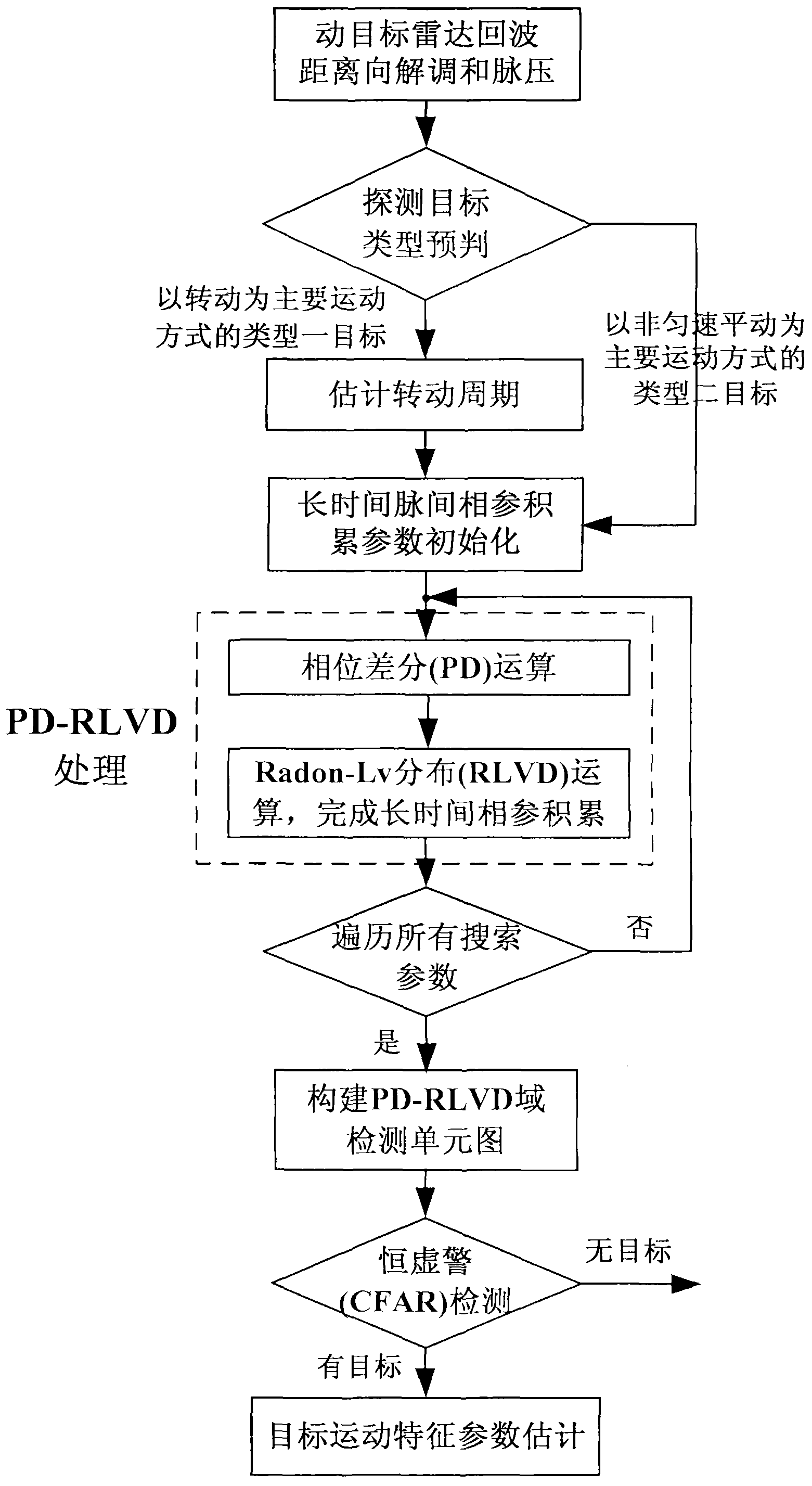Method for detecting radar weak moving target based on PD (Phase Differentiation) RLVD (Radon-Lv Distribution)
A moving target detection and phase difference technology, used in radio wave measurement systems, instruments, etc., can solve the problems of high signal-to-noise ratio requirements of input signals and difficult to meet the needs of radar detection performance, and achieve the effect of avoiding speed ambiguity
- Summary
- Abstract
- Description
- Claims
- Application Information
AI Technical Summary
Problems solved by technology
Method used
Image
Examples
Embodiment Construction
[0028] In order to explain the range migration and Doppler migration effect of the moving target involved in the present invention, a complex moving target radar echo modulation model is firstly given.
[0029] The radar echoes of complex moving targets include frequency-modulated signals produced by non-uniform translation and rotation. According to the Weierstrass approximation principle, the echo signal of a moving target can be approximated by a polynomial phase signal of sufficient order. The acceleration caused by the speed change of the target causes the echo to appear in the secondary phase, and the thrust of the engine during the maneuvering process of the target corresponds to the change in acceleration (jerk), so that the echo appears in the third phase (Cubic Phase, CP), frequency Non-linearly changing with time. Therefore, the CP signal can be used as a high-order approximation of the echo signal of a non-uniform translational target. Rotating targets, such as s...
PUM
 Login to View More
Login to View More Abstract
Description
Claims
Application Information
 Login to View More
Login to View More - R&D
- Intellectual Property
- Life Sciences
- Materials
- Tech Scout
- Unparalleled Data Quality
- Higher Quality Content
- 60% Fewer Hallucinations
Browse by: Latest US Patents, China's latest patents, Technical Efficacy Thesaurus, Application Domain, Technology Topic, Popular Technical Reports.
© 2025 PatSnap. All rights reserved.Legal|Privacy policy|Modern Slavery Act Transparency Statement|Sitemap|About US| Contact US: help@patsnap.com



